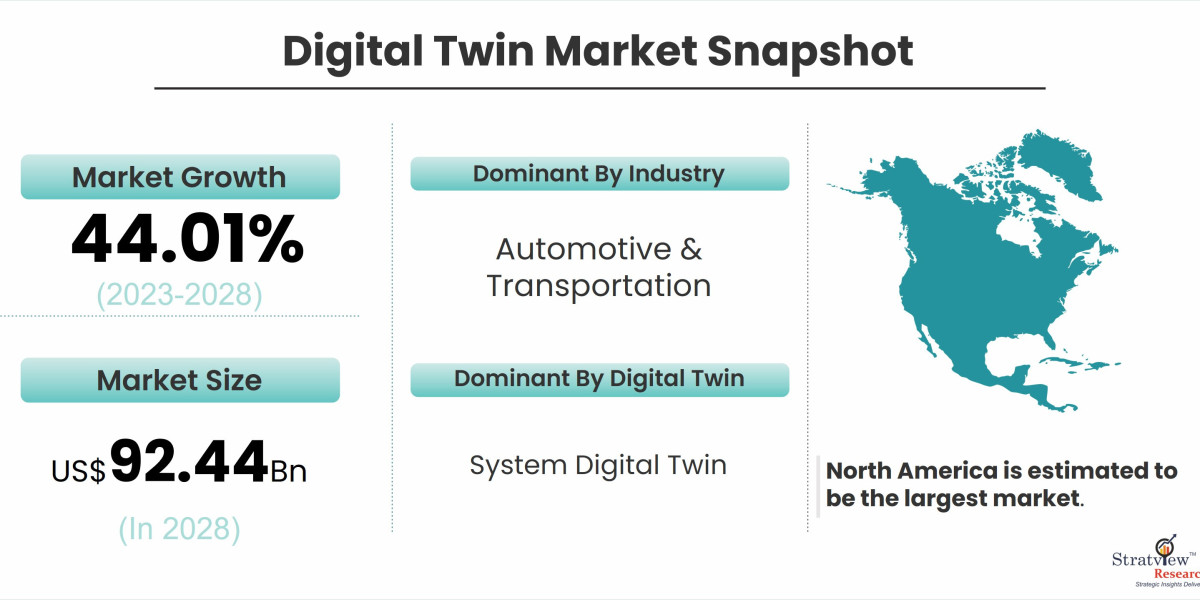The digital twin market has witnessed significant growth in recent years, driven by advancements in technology and increasing adoption across various industries. A digital twin is a virtual replica of a physical entity, enabling real-time monitoring, analysis, and simulation. This technology is revolutionizing sectors such as manufacturing, healthcare, and smart cities, offering unprecedented opportunities for optimization and innovation. In this article, we will explore the current trends in the digital twin market and its future projections.
Future Projections
- Market Growth: According to Stratview Research, thedigital twin marketwas estimated at USD 10.36 billion in 2022 and is likely to grow at a CAGR of 44.01% during 2023-2028 to reach USD 92.44 billion in 2028.
- Enhanced Capabilities: Future digital twins will have enhanced capabilities, driven by advancements in AI, machine learning, and edge computing. These technologies will enable more complex simulations and real-time analytics, providing deeper insights and more accurate predictions.
- Wider Industry Adoption: While manufacturing and healthcare are currently leading the adoption of digital twins, other industries are expected to catch up. Sectors like energy, automotive, aerospace, and retail will increasingly leverage digital twin technology for various applications, including asset management, supply chain optimization, and customer experience enhancement.
- Standardization and Interoperability: As the digital twin market matures, there will be a push towards standardization and interoperability. Industry standards will ensure seamless integration of digital twin solutions across different platforms and systems, fostering wider adoption and collaboration.
Current Trends
- Increased demand for predictive maintenance – Digital twins are used to monitor and predict the performance of assets in different industries. This helps to prevent unplanned downtime and reduce maintenance costs. According to General Electric Power (GE), leveraging digital twin solutions can help reduce reactive maintenance in less than 1 year by 40%, reduce time to achieve outcomes by 75%, and save up to $11 million by detecting and preventing failures.
- Adoption of Industry 4.0 – The fourth industrial revolution is characterized by the use of advanced technologies such as artificial intelligence, machine learning, and the Internet of Things (IoT). Digital twin technology plays a vital role in fulfilling various requirements of Industry 4.0, as they can be used to integrate and analyze data from these different technologies.
- Regulatory compliance requirements – In some industries, there are regulatory requirements that mandate the use of digital twins. For example, in the healthcare industry, digital twins can be used to simulate the performance of medical devices, which can help to ensure that they meet safety standards. The FDA approved the use of digital twins to simulate the performance of a new medical device, which helped to speed up the approval process.
- Growing Adoption in Multiple Industries: Owing to its benefits, digital twin technology has found applications across various industries, including manufacturing, healthcare, automotive, aerospace, energy, infrastructure, etc. This widespread adoption is driving market growth as more organizations recognize the benefits of digital twins in improving their operations, optimizing asset performance, and delivering better customer experiences.
Conclusion
The digital twin market is poised for remarkable growth, with its applications expanding across diverse industries. The integration of IoT, AI, and advanced analytics is driving the evolution of digital twins, making them more dynamic and powerful. As technology continues to advance, digital twins will play an increasingly vital role in optimizing operations, enhancing decision-making, and driving innovation in the digital age.



